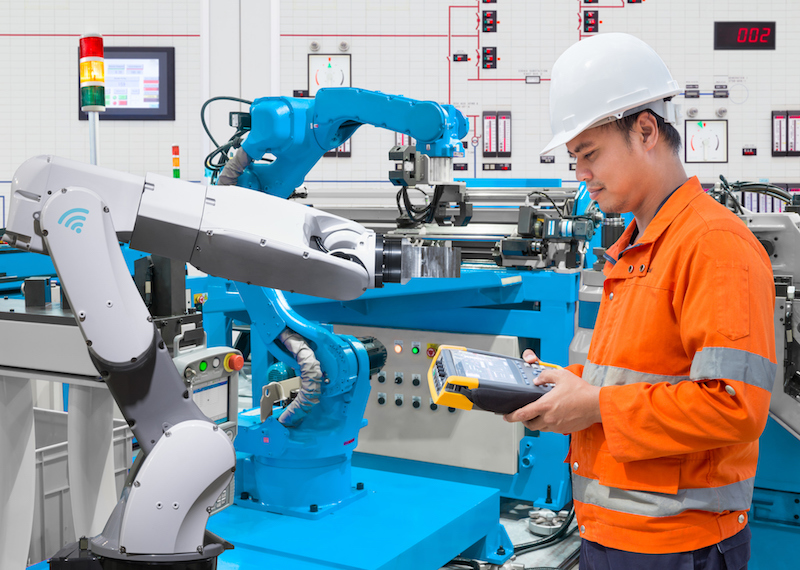Robot control systems are the backbone of any robotic application, allowing machines to perform tasks with precision and accuracy. These systems comprise a combination of hardware and software components that work together to enable robots to interact with their environment, sense changes, and adapt to new situations. In this article, we will delve into the world of robot control systems, exploring their components, types, and applications.

Components of Robot Control Systems
A typical robot control system consists of several key components, including:
- Sensors: Sensors are used to gather information about the robot’s environment, such as temperature, humidity, and distance. They provide feedback to the control system, enabling it to make informed decisions.
- Actuators: Actuators are the motors or other devices that carry out the robot’s movements. They are responsible for converting electrical energy into mechanical energy, allowing the robot to perform tasks.
- Control Unit: The control unit is the brain of the robot, processing information from sensors and issuing commands to actuators. It can be a microcontroller, a computer, or a dedicated control board.
- Power Supply: The power supply provides energy to the robot’s components, enabling them to function.
- Communication Interface: The communication interface allows the robot to interact with other devices, such as computers or other robots.
Types of Robot Control Systems
There are several types of robot control systems, each with its own strengths and weaknesses. Some of the most common types include:
- Open-Loop Control Systems: In an open-loop control system, the robot follows a pre-programmed sequence of instructions without feedback from sensors.
- Closed-Loop Control Systems: In a closed-loop control system, the robot uses feedback from sensors to adjust its actions and ensure that it is performing tasks accurately.
- Hybrid Control Systems: Hybrid control systems combine elements of open-loop and closed-loop control systems, offering a balance between precision and flexibility.
- Distributed Control Systems: Distributed control systems involve multiple control units working together to control a robot or a group of robots.
Applications of Robot Control Systems
Robot control systems have a wide range of applications across various industries, including:
- Manufacturing: Robot control systems are used in manufacturing to perform tasks such as assembly, welding, and material handling.
- Healthcare: Robot control systems are used in healthcare to perform tasks such as surgery, patient care, and rehabilitation.
- Logistics: Robot control systems are used in logistics to manage inventory, pack goods, and transport packages.
- Agriculture: Robot control systems are used in agriculture to perform tasks such as crop monitoring, harvesting, and pruning.
Robot Control System Design
Designing a robot control system requires careful consideration of several factors, including:
- Robot Dynamics: The robot’s dynamics, including its mass, inertia, and friction, must be taken into account when designing the control system.
- Sensor Selection: The choice of sensors depends on the specific application and the type of feedback required.
- Actuator Selection: The choice of actuators depends on the type of movement required and the amount of force or torque needed.
- Control Algorithm: The control algorithm must be designed to interpret sensor data, make decisions, and issue commands to actuators.
Challenges in Robot Control Systems
Despite the advances in robot control systems, there are still several challenges that need to be addressed, including:
- Complexity: Robot control systems can be complex and difficult to design, especially for applications that require high precision and accuracy.
- Reliability: Robot control systems must be reliable and fault-tolerant to ensure that they can operate continuously without interruption.
- Security: Robot control systems must be secure to prevent unauthorized access and protect sensitive data.
- Maintenance: Robot control systems require regular maintenance to ensure that they continue to operate efficiently and effectively.
FAQ
- What is the difference between an open-loop and closed-loop control system?
An open-loop control system follows a pre-programmed sequence of instructions without feedback from sensors, while a closed-loop control system uses feedback from sensors to adjust its actions. - What are the advantages of using a distributed control system?
A distributed control system offers improved flexibility, scalability, and reliability, as multiple control units can work together to control a robot or a group of robots. - How do I choose the right sensors for my robot control system?
The choice of sensors depends on the specific application and the type of feedback required. Consider factors such as accuracy, resolution, and response time when selecting sensors. - Can I use a robot control system for multiple applications?
Yes, many robot control systems can be used for multiple applications, depending on the level of customization and flexibility required.
Conclusion
Robot control systems are a critical component of any robotic application, enabling machines to perform tasks with precision and accuracy. By understanding the components, types, and applications of robot control systems, designers and engineers can create more effective and efficient systems that meet the needs of various industries. While there are challenges to be addressed, the benefits of robot control systems are clear, and their potential to revolutionize industries such as manufacturing, healthcare, and logistics is vast. As technology continues to advance, we can expect to see even more sophisticated and intelligent robot control systems that will transform the way we live and work.
Closure
Thus, we hope this article has provided valuable insights into Introduction to Robot Control Systems. We thank you for taking the time to read this article. See you in our next article!
